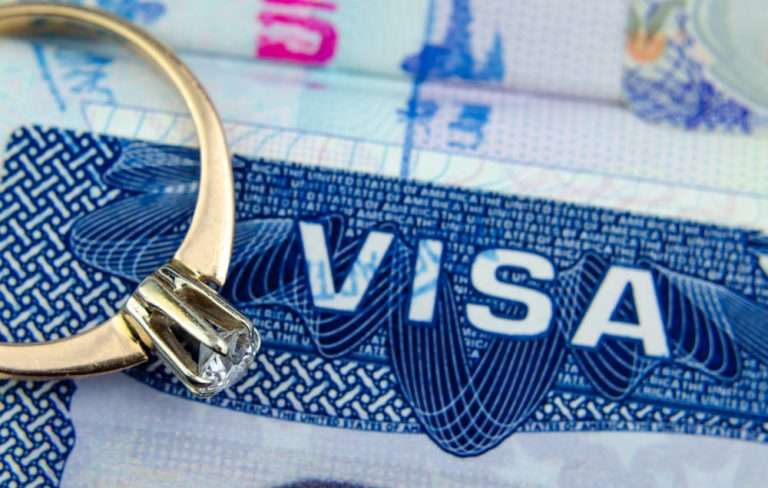The fiancé visa, officially known as the K-1 visa, is a pathway designed for foreign nationals engaged to U.S. citizens who wish to enter the United States to marry their partner. This visa offers the opportunity to bring couples separated by international borders together and build a life as a couple. In this blog, we will explore the eligibility requirements, the application process, timelines, potential challenges, and the next steps to obtain a fiancé visa in the United States.
What is a fiancé visa and who qualifies?
The K-1 visa allows a foreigner to travel to the United States to marry their U.S. citizen partner within 90 days of arrival. This visa is only available to fiancés of U.S. citizens; lawful permanent residents (green card holders) are not eligible to sponsor a fiancé for this type of visa.
Eligibility requirements
To qualify for a fiancé visa, both the U.S. citizen petitioner and the foreign fiancé must meet specific criteria:
- Genuine relationship: The couple must demonstrate that they have a valid relationship and a genuine intention to marry.
- In-person meeting: The couple must have met in person at least once within the two years prior to the visa application. Exceptions may apply for cultural, religious traditions, or extreme circumstances.
- Legally free to marry: Both individuals must be legally eligible to marry. If either was previously married, proof of divorce, annulment, or death of the former spouse must be provided.
- Intention to marry within 90 days: The couple must show their intention to marry within 90 days after the foreign fiancé arrives in the United States.
- Sponsorship requirements: The U.S. citizen sponsor must meet specific income requirements to demonstrate the ability to support their fiancé.
Fiancé Visa Application Process
Requesting a fiancé visa involves several steps that require careful preparation and documentation. Here is an overview of the process:
Step 1: Present the request
The U.S. citizen sponsor must begin the process by submitting Form I-129F, Petition for Alien Fiancé(e), to the United States Citizenship and Immigration Services (USCIS). This petition establishes the relationship between the sponsor and the foreign fiancé(e) and provides evidence of eligibility.
Key documents required for this step:
- Proof of U.S. citizenship (for example, birth certificate or passport).
- Evidence of the relationship (photos, communication records, travel receipts).
- Documentation of the in-person meeting (for example, plane tickets, hotel receipts).
- Statements of intent to marry signed by both partners.
Step 2: USCIS Review and Approval
Once USCIS receives the petition, it reviews it to verify its completeness and accuracy. If additional information is needed, a Request for Evidence (RFE) is issued. If the petition is approved, it is sent to the National Visa Center (NVC) for further processing.
Step 3: Visa Application and Interview
The foreign fiancé must complete the DS-160 visa application online and pay the application fee. Then, they must schedule a visa interview at the U.S. embassy or consulate in their home country.
- During the interview, the foreign fiancé must provide:
- A valid passport.
- Approval notice of Form I-129F.
- Police certificates.
- Medical examination results.
- Proof of relationship.
- Evidence of financial support (Form I-134, Affidavit of Support).
The consular officer will evaluate the application, verify the authenticity of the relationship, and ensure that the foreign fiancé meets all eligibility requirements.
Step 4: Visa issuance and travel
If approved, the K-1 visa is issued and the foreign fiancé can travel to the United States. Upon arrival, the couple must get married within 90 days to fulfill the visa conditions.
Estimated processing time for fiancé visa
The time to obtain a fiancé visa can vary depending on factors such as processing delays, document preparation, and the complexity of the case. Below is an estimated timeline:
- USCIS processing: 6-9 months for petition review and approval.
- NVC processing: 1-2 months to send the case to the embassy.
- Interview and visa issuance: 1-2 months after scheduling the interview.
- Total time: Approximately 9-14 months from petition submission to visa approval.
Applicants are advised to plan ahead and ensure all documentation is complete to avoid unnecessary delays.
Common challenges and how to overcome them
The fiancé visa process can present challenges that may cause stress or delays. Understanding these potential issues can help applicants navigate effectively.
To reduce these risks, couples may consider consulting abogados de inmigración en Estados Unidos for guidance and to avoid complications in the process.
Insufficient Evidence of the Relationship
Providing complete evidence of the relationship is crucial. Couples should:
- Save and organize photos, travel receipts, and communication records.
- Provide detailed statements about the timeline of their relationship.
- Include support letters from friends and family.
Financial Ineligibility
The U.S. citizen sponsor must meet the required income threshold to sponsor their fiancé. If they do not meet the threshold, they can:
- Use assets to supplement income.
- Obtain a joint sponsor who meets the financial requirements.
Processing Delays
Long processing times can be frustrating. Applicants should:
- Respond promptly to RFEs or other USCIS requests.
- Double-check forms and documents for accuracy before submission.
Denial Risks
Visa denial can occur if:
- The relationship is deemed fraudulent.
- The foreign fiancé has disqualifying criminal history or immigration violations.
- Key documentation is missing or incomplete.
To mitigate these risks, couples may consider consulting an immigration attorney for guidance.
What Happens After Entering the United States?
After the foreign fiancé enters the United States with a K-1 visa, the couple must marry within 90 days. Failure to marry within this period may result in the foreign fiancé’s removal from the country. Once married, the foreign spouse can apply for adjustment of status to become a lawful permanent resident (green card holder).
Filing for Adjustment of Status
The newlywed couple must file Form I-485, Application to Register Permanent Residence or Adjust Status. Required documents include:
- Marriage certificate.
- Evidence of a bona fide marriage (joint accounts, leases).
- Medical exam results.
Attending the Green Card Interview
USCIS may require the couple to attend an interview to verify the authenticity of their marriage. Questions may focus on:
- How the couple met.
- Details about their relationship.
- Future plans as a married couple.
Conditional Residence
Initially, the foreign spouse will receive a conditional green card valid for two years. To remove the conditions, the couple must jointly file Form I-751 within the 90 days before the green card expires.
Fiancé Visa FAQs
Can green card holders sponsor a fiancé?
No, only U.S. citizens can sponsor a fiancé for a K-1 visa. Green card holders must wait until they become U.S. citizens.
What if the relationship ends before the 90 days?
If the relationship ends before the 90 days and no marriage occurs, the foreign fiancé must leave the United States immediately. Failure to do so may result in future immigration issues, including entry bans.
Can the 90-day period be extended?
No, the 90-day period cannot be extended under any circumstances. If the couple does not marry within this time, the foreign fiancé must leave the country.
What if the foreign fiancé has children?
Unmarried children under 21 of the foreign fiancé may apply for K-2 visas as dependents. These children must also meet eligibility requirements and be listed on Form I-129F.
Does a K-1 visa guarantee green card approval?
No, obtaining a K-1 visa does not automatically guarantee green card approval. USCIS will evaluate the marriage and the foreign spouse’s eligibility during the adjustment of status process.


